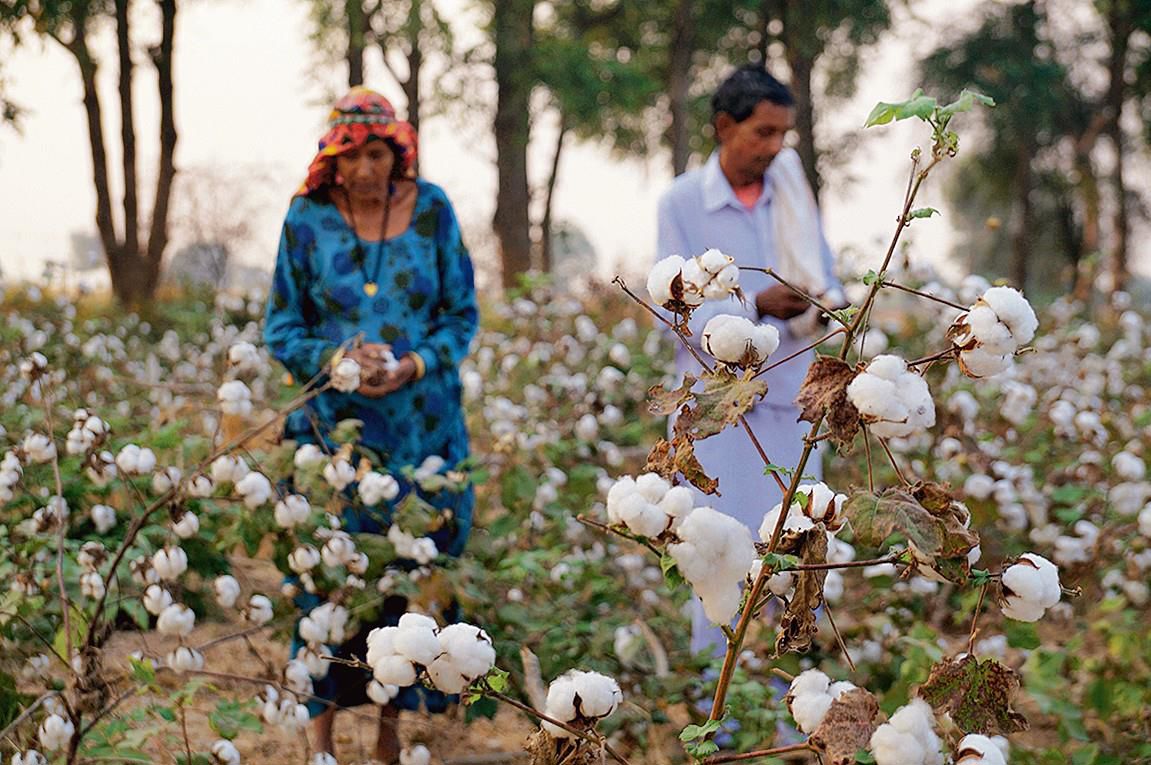White gold cotton loses sheen, farmers opt for moong, basmati varieties
Ruchika M Khanna
Chandigarh, June 25
Cotton, which is also known as the “white gold” has lost its lustre, as farmers failed to fetch a good price last year.
As compared to 2.14 lakh hectares under cotton in 2023, the area has decreased to just 99,601.5 hectares.
Last year, cotton farmers earned Rs 15,000 to Rs 20,000 per acre profit, while those who went in for non-basmati and basmati crops, earned a profit of Rs 40,000 to Rs 45,000 per acre, according to the Agriculture Department. Ideally, this fall in area under cotton crop should have sent the alarm bells ringing in the corridors of power, especially when there is a lot of emphasis on crop diversification and making agriculture sustainable.
However, farmers have not fully opted for the water-guzzling non-basmati paddy. The farmers, especially in South Malwa, have gone in for summer moong in a big way instead of cultivating cotton.
A total of 45,000 hectares of land under the cotton belt of Fazilka, Bathinda, Mansa, Muktsar, Sangrur, Barnala, Faridkot and Moga has reportedly come under moong cultivation, according to the figures made available by the Agriculture Department.
Jaswant Singh, Director, Agriculture Department, said, “Once the moong is harvested next month, the farmers will transplant basmati varieties, which consume much less water.” As a result, the state government is expecting a 40 per cent increase in area under basmati varieties, up from 5.96 lakh hectares in 2023. The target for basmati cultivation has been set at 10 lakh hectares this year. Inquiries made by The Tribune revealed that a sizeable number of farmers in the South Malwa and even in Majha are opting for hybrid varieties of non-basmati paddy —SAWA 7501, 27P51, 27P22 and 28P67.
An agriculture officer posted in Majha, requesting anonymity, said these hybrid varities had sold like hot cakes. “Instead of Rs 1,700 (3 kg bag), hybrid varties are selling from Rs 3,000 to Rs 3,200 per packet,” he said, adding that these varieties give a yield of 30 to 32 quintals.
Another officer, posted in the head office here, expressed his apprehension regarding the sale of some hybrid varieties to farmers, which had not been approved by the government. “Farmers get lured by higher yields of these varieties. Though our field officers are telling them not to grow the unapproved varieties, they just want to get maximum yield. God forbid, if a natural calamity strikes, they will not be compensated for the loss,” he stated.
This year, the state government has set a target to bring 30. 57 lakh hectares under paddy cultivation, which includes 10 lakh hectares under basmati varieties and 20. 57 lakh hectares under non-basmati varieties. Last year, the total area under paddy (basmati and non-basmati) was 31.87 lakh hectares.
Dipping returns, pink bollworm add to woes
- Area under cotton has fallen from 2.14 lakh hectares to 99,601 hectares
- Farmers fetched Rs 8,000 per quintal as compared to Rs 10,000- Rs 12,000 in previous years
- Around 25 per cent cotton sold below MSP. Crop badly hit by pink bollworm









